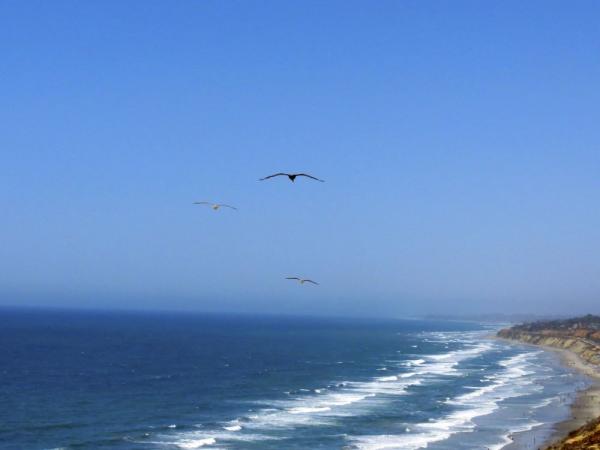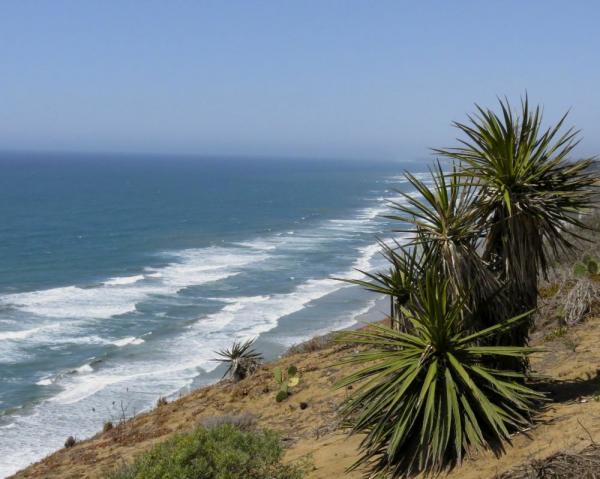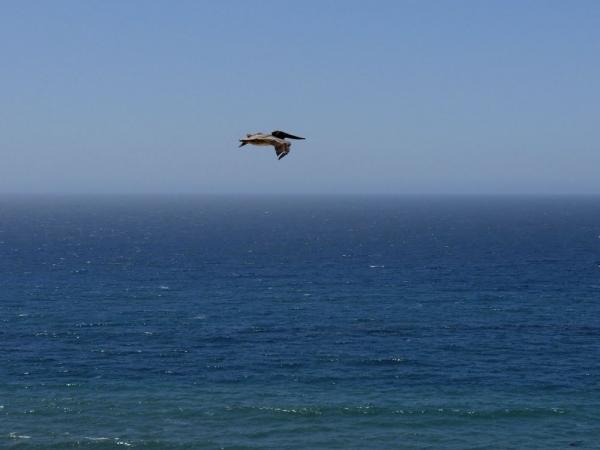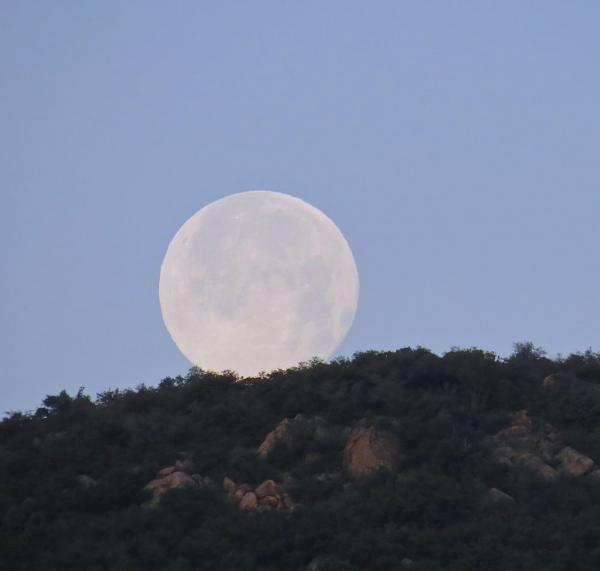Photo Journaling
I've got a Cannon Powershot digital camera with optical zoom that I didn't know how to use and want to take with me to Svalbard. So I took an outdoor photography class through REI at Torrey Pines State Reserve on May 11 that was very fruitful.
 Torrey Pines State Reserve in Spring
Torrey Pines State Reserve in Spring
Torrey Pines State Reserve
 There are miles of untamed beaches and a variety of wildlife at Torrey Pines.
There are miles of untamed beaches and a variety of wildlife at Torrey Pines.
 A variety of cactus, succulents, and chaparral cling to the cliffs.
A variety of cactus, succulents, and chaparral cling to the cliffs.
The reserve is one of the wildest stretches of land on the southern California coast. Consisting of beautiful cliffs that are an uplifted ancient submarine fan, a native chaparral plant community, the elegant Torrey pine and miles of natural beaches, it is the perfect backdrop for a practicing photographer. it was a splendid day.
The Torrey Pine
 The last surviving remnant of an ancient coastal forest, the Torrey Pine is the rarest species of pine in the United States.
The last surviving remnant of an ancient coastal forest, the Torrey Pine is the rarest species of pine in the United States.
The Torrey Pine, for which the reserve (and famous golf course) are named is the rarest pine species in the United States. It grows only at the reserve and on Santa Rosa Island, one of the Channel Islands to the north. It is probably the last surviving remnant of an ancient coastal forest. Blankets of summer fog help keep the pines hydrated while winds twist and gnarl the pines that live at the top of the cliffs. The pines seem to convey a sense of hardship in what may otherwise appear to be a sublime and serene world.
Brown Pelicans
 The brown pelican has made a full comeback after DDT severely reduce its population.
The brown pelican has made a full comeback after DDT severely reduce its population.
Brown pelicans feed by plunge diving and using the force of impact to stun fish and scoop them up. They almost disappeared from North America when DDT caused egg thinning and their shells to crack during incubation. I can't imagine the southern California coast without the Brown Pelican. They made a full comeback thanks to pesticide regulations.
A Little Geology
 Badlands topography produced by erosion in the Bay Point Formation
Badlands topography produced by erosion in the Bay Point Formation
We stayed atop the cliffs, for our photography, but I've got to mention the spectacular geology that can be seen along the shore at the bottom of the cliffs. As many people enjoy the surf, they are unaware that they are in the shadow of an Eocene submarine fan formed by the ancient Ballena River. The Ballena River emptied its sediment load while still off the coast of Sonora, 200 miles to the south, prior to the split and migration of the California peninsula from the Mexican mainland. All of this was deduced by dating and matching rhyolite that proliferates here seemingly without a source. The sedimentary layers and fossils that literally spill out of the rock face are probably the subject of another journal, but I get really excited about it. For today you will have to settle for this picture of what amounts to some of the topmost layer, the Bay Point Formation which is a loosely consolidated brown sediment that exhibits "badlands" topography as a result of erosion.
Practice
Our instructor suggested we hone skills learned in class by taking a picture every day, so here is one I took a few days later for my students who are currently observing the phases of the moon.
 Full moon May 14 from Pine Valley
Full moon May 14 from Pine Valley

Comments